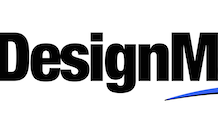Xeikon has announced that a unique combination of the Xeikon X-800 workflow and the PantherCure UV ink can generate a tactile layer, responsible for a so called ‘haptic effect’ in print.
Printers can easily create designer labels with enhanced tactility, textures and a luxury feel. Xeikon’s new haptic printing process not only boosts and expands the range of possible applications for high-end label markets, it helps make significant time savings by avoiding any modifications to the prepress files. Tactile effects on labels are greatly appreciated by the beer, beverage, food, and health and beauty markets.
Jeroen Van Bauwel, director product management said, ‘The technology generating the tactile and textured layer is embedded in the Panther’s X-800 workflow. It is the brand owners and designers who define the structure, shape and form of the design. When the file is received, the workflow automatically recognises the elements of the design and generates the information required to drive the print head – that’s what creates the haptic effect in print on the end product.’
In order to further optimise the workflow on the Panther, Xeikon has developed a specific solution, embedded in the X-800 workflow: an automated optimisation of the white ink layer.
The production of labels on clear facestocks (e.g. premium beer or health and beauty labels) comes with unique challenges. An opaque white is required to make the design standout, this may result however in varying ink layer thicknesses across the web. The uneven thickness of the ink layer will generate a telescoping effect on the printed rolls. In the past, press operators have overcome this by printing smaller rolls, resulting in more frequent roll changes and extra waste in material and time.
Some printers found a solution in spending extra time in prepress to reduce the amount of white. This time-consuming prepress work can now be handled in a fully automated way by the X-800 digital front-end without intervention at any stage in the production process. The X-800 automatically reduces the white layer. The extent of reduction will depend on the colours that come on top of it. The result is an increase in uptime during the manufacturing process – both in printing and converting – as printers can run larger rolls. In addition, PSP’s save on cost, not only because of the reduced amount of white ink, but also because of the reduction of waste.
Van Bauwel concluded, ‘Xeikon continues to work towards excellence to enhance every facet of its portfolio. We continue to look for opportunities to make savings on costs and time. By improving each small step of the process, we can make a big difference to the overall production process and reduce manufacturing costs. Achieving haptic effects in print through the unique capabilities of our X-800 workflow and ink optimisation not only boosts and increases the range of possible applications but allows printers to streamline their operations.’
XEIKON www.xeikon.com





















